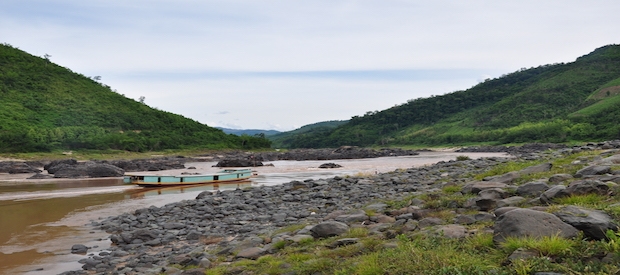An Interactive History of the Xayaburi Dam
The timeline below gives an interactive view of the history of the Xayaburi Dam project, the first dam proposed and under construction on the lower stretch of the Mekong River mainstream in Laos.
The Xayaburi Dam has faced significant opposition from local communities, Mekong governments, the Mekong River Commission (MRC), scientists and stakeholders from around the world. Despite the fact that construction has started, the dam continues to be the subject of lawsuits, human rights complaints and OECD Guidelines complaints. The project has faced significant delays since it was first proposed, and it has prompted widespread studies into the rich resources of the Mekong River and the future of these resources in the face of plans for rapid and extensive hydropower development.
In September 2010, the MRC published a Strategic Environmental Assessment on Mekong Mainstream Dams (SEA), which recommended a ten-year moratorium on all dam building on the Lower Mekong River to enable time for more studies and evidence-based decision making. In April 2014, the governments of Vietnam and Cambodia reiterated the recommendations of the SEA, calling for a delay to all dam building on the Lower Mekong River.
The Xayaburi Dam was the first test of the Prior Consultation process under the 1995 Mekong Agreement. It was widely considered a failure, revealing the significant ambiguities within the agreement and the challenge of meaningful regional cooperation in the Mekong. Despite an absence of agreement between all four Mekong governments, the Government of Laos pushed ahead with the Xayaburi Dam.
Energy experts have concluded that Thailand does not need the electricity from the Xayaburi Dam or other proposed hydropower projects on the Mekong River. However, many of the companies involved look to profit significantly from the project. Meanwhile, the costs of the Xayaburi Dam will be borne by the millions of people who live along the Mekong River.
The dam will block critical fish migration routes for between 23 to 100 species, including the iconic Mekong Giant Catfish, and destroy some of the river’s complex ecosystems that serve as important fish habitats. It would block the flow of sediments and nutrients, affecting agriculture as far downstream as the Mekong Delta in Vietnam. The Lao government will relocate at least 3,000 people, and more than 202,000 people living near the dam site will be directly affected.
The campaign to stop the Xayaburi Dam has garnered worldwide media attention, shining a spotlight on the importance of the Mekong River and the millions of people that depend on it, and creating a space for greater debate about the future of hydropower development in the Mekong River Basin.
It's imperative that Mekong governments learn from the mistakes of the Xayaburi Dam. They must recognize the inherent value of the Mekong River to millions of people throughout the region, and prioritize the sustainability of these rich resources. The Xayaburi Dam cannot be allowed to become the precedent for decision making over the Lower Mekong River; rather it must serve as a warning to not gamble with the future of the region’s irreplaceable lifeline.



